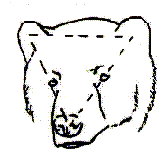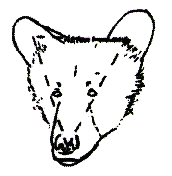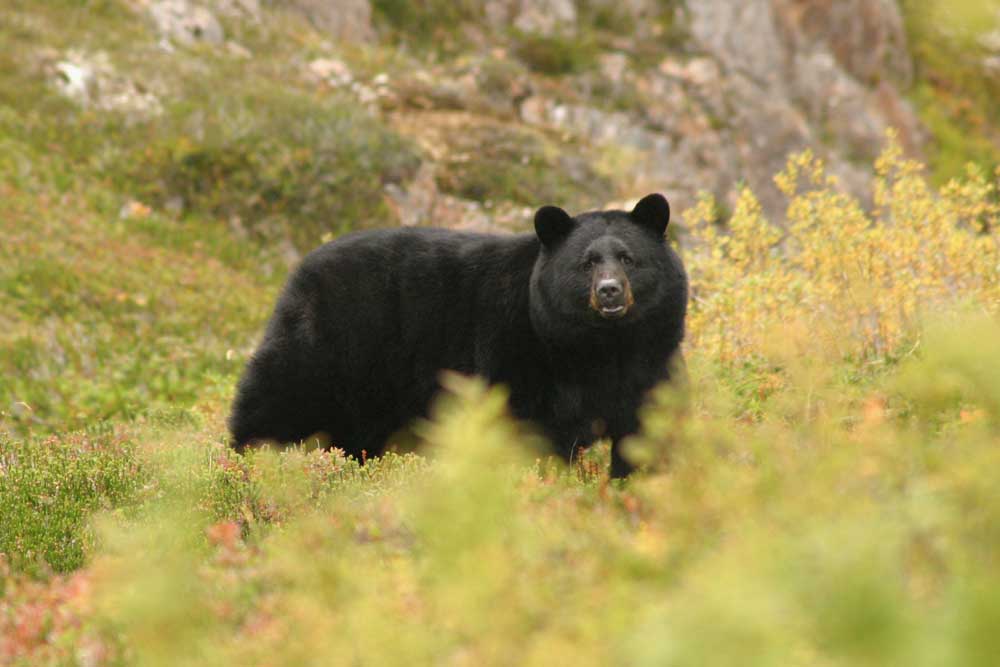Black Bear Hunting in Alaska
Note: This is not a substitute for the Alaska Hunting Regulations. For more complete infomation read the regulations and the permit hunt supplements. They are available at Alaska Department of Fish & Game offices and establishments that sell hunting licenses and tags.
Be Selective: Why is this important?
The most important factor in maintaining a stable population of bears is minimizing the take of females. The following are some things that you can do to help maintain bear populations:
- Target large, adult male black bears.
- Be patient! Don’t shoot the moment you see a black bear. Multiple bears often visit the same bait station. Adult males have larger home ranges and may take longer to find the bait. Females have smaller home ranges and may visit bait more often.
- Never shoot females with cubs. It is illegal to do so. Be aware that a sow may leave her cubs in a nearby tree while she visits the bait station, so always observe carefully.
- Keep evidence of the bear’s sex attached to the bear hide until sealing is complete. You are required to leave the penis sheath or vaginal orifice on the hide until the bear is sealed.
Judging sex and size of bears
Make sure to accurately identify the sex and size of the bear before shooting. It is illegal to shoot cubs or females with cubs Prioritizing the harvest of mature males helps sustain high-quality hunt opportunities over time. Observe bears long enough to ensure no cubs are present. Cubs may wander away from their mother or be obscured from view by thick vegetation, particularly in the fall. Fall is also a time when bears of both sexes are less segregated and have gained weight over the summer, making it harder to determine their sex. Take your time to make a positive identification.
Select large males
If you see a single bear, use this criteria to gauge whether it is a large male, a female, or a younger bear. Harvesting a large male often requires observing multiple bears before making a decision. It is common to see several small bears for each medium-sized one, and several medium-sized bears for each large one.
Binoculars are essential, and spotting scopes can be extremely useful for judging the size and sex of black bears. Optics are also valuable when evaluating hide quality and looking for rubbed spots on bears. However, black bears can appear deceptively large when viewed through magnifying optics, therefore, it is important to be patient and wait for opportunities to compare individual bears.
Although it is legal to shoot a marked bear, we prefer that you avoid doing so. These bears provide valuable information about how frequently females reproduce, the age when cubs disperse, and home range size. With patience, baiting can help maintain healthy bear populations and provide you with the opportunity to harvest a trophy-class Alaskan black bear.
How to identify large/male bears

Large/Adult Male Bears
- Stocky legs; massive body
- Large, rounded head
- Ears appear smaller
- Ears to nose and equilateral triangle
- Slower, more deliberate movements (swagger gait)
- Penis sheath visible
How to identify small young bears

Small/Young Bears
- Appear to be "all legs"
- More streamlined, pointed head
- Head large in proportion to body
- Ears appear closer together
- Ears to nose a skinny triangle

